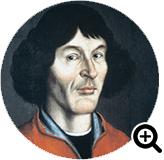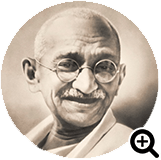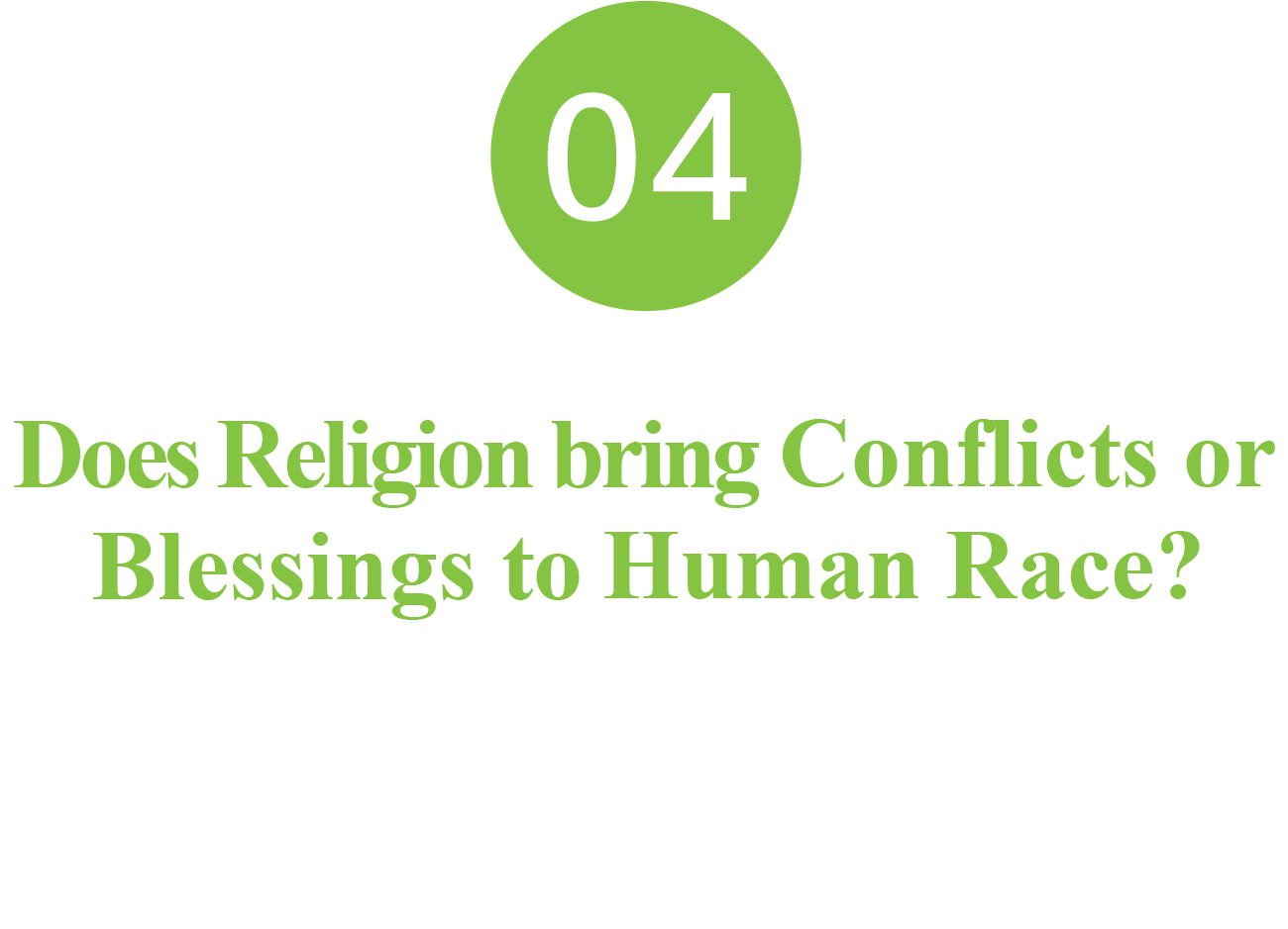
or Blessings to Human Race?
| 4.1 | Religion: Developments and Conflicts in Human Civilizations |
| 4.2 | Religion & Peace |
| 4.3 | Religious Perspectives on Peace |
| 4.1 | Religion: Developments and Conflicts in Human Civillizations |

| Try and answer the True/False questions below to see how religion affects the development of human civilizations. |
| True | False | |||
|---|---|---|---|---|
| 1 | Nicolaus Copernicus proposed that the sun was the stationary center of the universe. His theory disputed the widely-held belief that Earth was the center of the universe in the church in 15th Century. |
|
||
| 2 | The custom of Hong Kong's "Petty Person Beating"(Da Xiaoren) booms in the Mid-Autumn Festival.
Answer: People usually practice "Petty Person Beating" in March.
|
|
||
| 3 | One of the functions of the parade and Bun Scrambling Competition in the Cheung Chau Bun Festival is to create sense of community.
Answer: People usually practise "Petty Person Beating" in March.
|
|
||
| 4 | The Pope has appealed on behalf of the Catholic Church to the world for peace and environmental protection.
Answer: It happened in 2015.
|
|
||
| 5 | Mother Teresa was awarded the Nobel Peace Prize.
Answer: She was awarded the Noble Peace Prize in 1979.
|
|
| True | False | Answer |
||
|---|---|---|---|---|
| 6 | Taliban ignored the against of various countries and destroyed the world's highest stone Buddha statue. This statue was recognized as the world's cultural heritage. |
|
||
| 7 | The ongoing Israeli-Palestinian conflict has lasted several decades. The major religions of Israel and Palestine are different.
Answer: Major Palestinians believe in Islam, while major Israelis believe in Judaism and Christianity.
|
|
||
| 8 | By the early 19th century, the Hong Kong government lacked resources to cope with the rapid growth of in population. Some religious and charitable organizations started to provide a wider range of social services, such as education for children, hospitals, and community services. |
|
||
| 9 | Drinking is not allowed in Major religions' teachings.
Answer: Major religious proscriptions against alcohol abuse.
|
|
||
| 10 | Mohandas Gandhi's 'non-violent philosophy' was inspired from Jainism.
Answer: Jainism is an Indian religion which is strictly against all killings of living beings.
|
|
She received the Nobel Peace Prize in 1969 for work undertaken in the struggle to overcome poverty and distress, which also constitute a threat to peace.
| 4.2 | Religion and Peace |

| 4.2 | Religion and Peace |
Peace can be understood from two perspectives.
- Passive perspectives: Peace is the state that there is no direct violence between individuals, groups or countries.
- Proactive perspective: Peace is more than passive peace (no direct violence); it is the presence of social justice, a fair distribution of power and resources and equal opportunities.
- Managing interpersonal and organizational conflicts helps to control and reduce actual and potential violence. A good negotiation skill might achieve peace (passive or proactive) for a short period of time.
- Without good values set as a foundation stone of lasting peace, the good presentation and negotiation skills that people used may become superficial. The state of peace will not be long lasting and stable.
- Many religious and ethical traditions often offer teachings and dogmas for men and women. These teachings and dogmas contain important values, such as respect, tolerance, sympathy, forgiveness, and reconciliation etc. We are suggested to develop good values —— respect others, tolerate dissent and to live in justice from an early age, thereby long lasting peace could be achieved.
- These values penetrate in both religious and nonreligious aspects, like doctrines, stories, poems, art works, architectures, etc. They influence people who are non-believers as well.
and study the questions listed on the next page.
Once upon a time, there was a kind old Bishop who lived in a small town in France. He was much loved by the people in the town.
One evening in October 1815, a man with a long beard and dusty, torn clothes walked into the town. He was of medium height, broad shouldered and strong. A leather cap half-hid his face, which was sunburnt and shining with sweat. The townspeople, who had never seen him before, watched with interest as everything he did. No innkeeper would serve him as he had no money. Finally, a woman gave him a few coins and told him to ask the Bishop for help.
The Bishop had given his palace to the town hospital in many years earlier and lived a simple life. He gave everything to the poor except for a basket of silver.
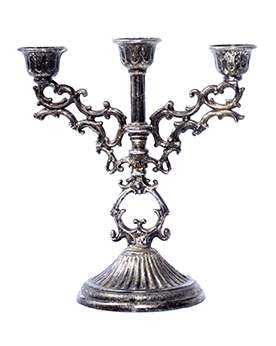
The Bishop gave this man food and a bed for the night. This man, called Jean Valjean, had been a prisoner for nineteen years for stealing a loaf of bread. This was the first time in nineteen years he had slept in a proper bed. He had woken because the bed was too comfortable. The Bishop's hospitality surprised him. Life had been unjust to him, and he was angry. He woke up and stole the Bishop's basket of silver and went away before sunrise. Unfortunately, he was arrested by the policemen who took him back to the Bishop. Surprisingly, the Bishop said, "What about the candlesticks? I gave you those as well, don't you remember? Did you forget to take them?"
The policemen let go of Valjean's arm and left. The Bishop walked up to him and said to Jean Valjean in low voice, "Don't forget that you promise to use the money to make yourself an honest man."
- This is a short story extracted from Les Misérables. Les Misérables was written by the great French novelist and poet, Victor Hugo.
- Les Misérables is a French historical novel, not a religious story. It reveals a virtue that most religions affirm, and that is: Forgiveness
![]() Questions for Reflection
Questions for Reflection
- Why did Jean Valjean steal the Bishop's basket of silver? Give two reasons.
- How would you describe the psychological state of Jean Valjean before he was brought to the Bishop by the police?
- Why did the Bishop conceal from the policemen that the basket of silver had been stolen?
- If Valjean was sent to jail again, how would he view the justice in society?
- From the story, what is the relationship between forgiveness and peace?
- For people who have a religion, it is easier to show mercy and forgiveness towards others. What is the hypotheses behind this statement?
- How can we prevent forgiveness from being abused?
- What is the difference between forgiveness and indulgence?
and study the questions listed on the next page.
December 23, 20 15 (Wednesday)
Extremist group Somali Islamist militants (al Shabaab) in East Africa sprayed a Kenyan bus with bullets on Monday and they tried to kill all the Christians. The Christians in bus were protected by the Muslim women. One of the witnessed described that, the Muslim women tried to negotiate with the militants not to kill anyone of them. One of the Christian men tried to escape from the murder, however he was killed together with the bus driver. Kenyan government launched a massive manhunt. The government officer also praised the Muslims and said, "we are all Kenyans and that we are not separated by religion."
The attack took place in Mandera, in northeast Kenya. Kenya's long north-eastern border with Somalia is widely considered a security weak spot. Most of the buses passing through this border were protected by the police. The accident occurred in a bus with over 100 passengers when the bus kept moving onward for a short distance after the patrol vehicle broke down in the middle way. Several gunmen stopped the bus, asked passengers to identify their religion, and attempted to separate them. The Muslims defied demands from the attackers to help identify Christians traveling with them, and even gave some non-Muslims their religious attire to wear in the bus so that they could not be easily identied.
"If you want to kill someone, then kill us. There is no Christian at all. Finally, they gave up and left but warned that they would be back." according to witnesses.
Somali Islamist militants had initiated several attacks in Kenya for the revenge of the deaths of thousands of Muslims killed at the hands of the Kenyan security forces. In previous attacks, they killed 150 people in April in one of the Universities. According to the local reports, who didn't know Quranic verses were killed.
- This news report conveys the importance of inter-religious harmony and peaceful coexistence of different religions.
- At the critical moment, no matter what religious belief others hold, we should respect and save lives and let the splendour of the human spirit shine on the earth.
![]() Questions for Reflection
Questions for Reflection
- Indicate which two religions are mentioned in the above news report. What is your perception of the relation between these two religions?
- Indicate the peace elements in this news report.
- Considering this news report, why do you think religion is a reason for some people to use force, while for others it is not?
- How to achieve passive peace? How to enhance proactive peace? What are the priorities and relationship between passive and proactive peace?
| 4.3 | Religious Perspectives on Peace |

To which situations/cases could it be applied to in our daily life?
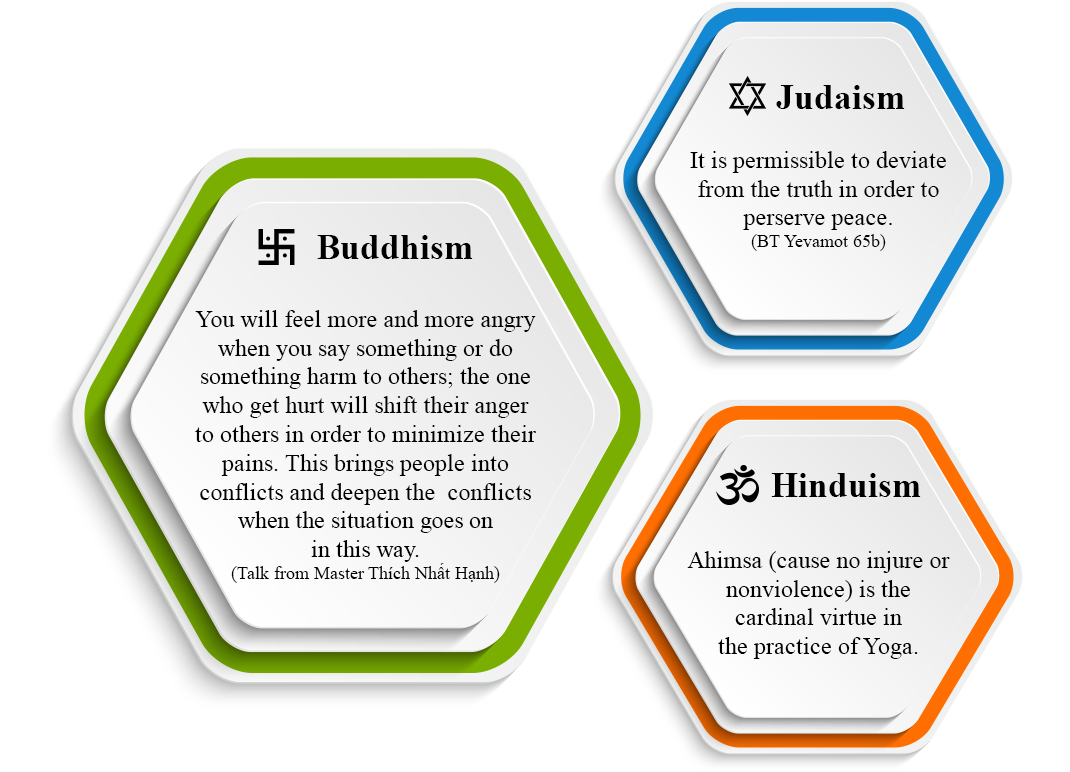
To which situations/cases could it be applied to in our daily life?
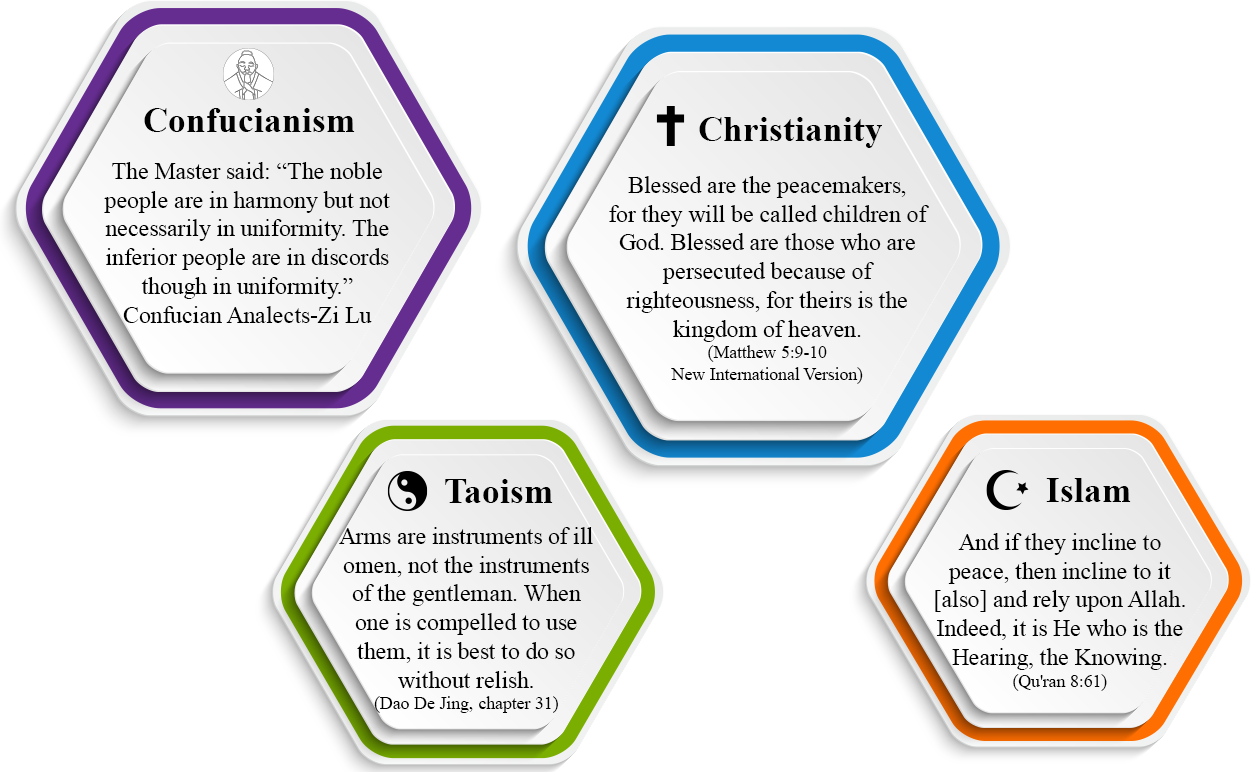
Importance of Religion and Ethics
Prof. Hans Küng devotes his life to religious studies and gives impetus to a global ethic. He admits that religion has a dark side (many deaths have been caused by religious con icts). In spite of this, he believes religion has a bright side as well, because religion maintains peace and provides ethical standards and personal instructions for humankind. A Message from Hans Küng:There will be no peace among the nations
without peace among the religions.
There will be no peace among the religions
without dialogue among the religions.
There will be no dialogue among the religions
without global ethical standards.
There will therefore be no survival of this globe
without a global ethic.

 HOME
HOME
